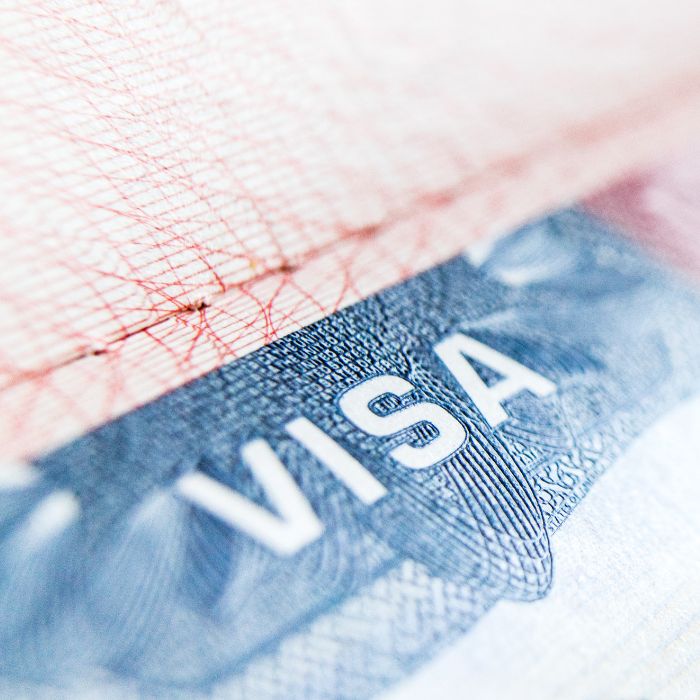
Countries / Territories
- 🌐
Related contacts

Senior Associate
Related offices
Related content
By: Crystal Tsai
In response to the recent imposition of a new national security law in Hong Kong, President Donald Trump signed an Executive Order on Hong Kong Normalization, finding that Hong Kong was “no longer sufficiently autonomous to justify differential treatment in relation to the People’s Republic of China.” The Order eliminates preferential visa treatment for foreign nationals born in Hong Kong, as well as those who hold Hong Kong Special Administrative Region (SAR) passports, treating affected individuals as nationals of the People’s Republic of China. In the EB-5 context, Hong Kong-born investors will now be counted against the immigrant visa quota for mainland China, delaying their EB-5 process by at least five years, based on current visa backlogs.
While processes for Taiwanese investors remain unchanged, ongoing geopolitics in the East Asia region and immigration priorities of the current U.S. administration signify a renewed urgency for Taiwanese nationals interested in the EB-5 option to act.
Securing Green Cards through EB-5 for Taiwan-born Investors
The EB-5 Immigrant Investor Program has long been an attractive option for many Taiwanese private clients seeking to relocate to the United States. As background, the EB-5 Immigrant Investor program requires the investor to demonstrate that his or her minimum investment of USD 900,000 in a Targeted Employment Area (TEA) or rural area (or USD 1.8 million for non-TEA investments) will ultimately result in the creation of 10 full-time U.S. jobs.
The EB-5 process has been attractive to many Taiwanese nationals, as the application process does not have an education or language requirement, and no labor certification is needed.
Green card holders also benefit from the freedom to work and live permanently in the U.S. Benefits of the EB-5 program include the ability for the investor to self-petition, as well as include a spouse and unmarried children under the age of 21 as dependents for the green card application. Once they are green card holders, the investor’s children become eligible to receive scholarships and federal loans to potentially reduce education costs. Moreover, the investor and his or her family would also have the option to seek U.S. citizenship.
Geopolitics Require Investors to Plan Ahead
The legal provision that treats Taiwan as a separate foreign state for the purpose of counting immigrant visas remains unchanged. Thus, Taiwanese nationals are eligible to immediately apply for conditional permanent residence as soon as the principal investor’s I-526 Immigrant Investor Visa Petition has been approved by the United States Citizenship and Immigration Services (USCIS). Notably, Hong Kong or mainland Chinese nationals who are married to Taiwanese nationals can also benefit through cross-charging, meaning that the married couple can be counted in the Taiwan visa line and bypass the lengthy China (and Hong Kong) backlog.
Nevertheless, the recent events regarding Hong Kong underscore how quickly a policy can change, and with a detrimental impact to investors and their families. Thus, families seeking to file EB-5 petitions to secure U.S. permanent residence (whether for the whole family or just for the children before completing their university degrees) should begin the EB-5 process as early as possible to account for potential prolonged processing times.
If you would like to learn more about the EB-5 Immigrant Investor Program, please contact Crystal Tsai at [email protected] or Rahul Soni at [email protected].
This blog was released on July 21, 2020, and due to the circumstances, there are frequent changes. To keep up to date with all the latest updates on global immigration, please visit our COVID-19 microsite, subscribe to our alerts and follow us on LinkedIn
Countries / Territories
- 🌐
Related contacts

Senior Associate
Related offices
Related content
Explore more at Fragomen

Media mentions
Partner Ángel Bello Cortés outlines upcoming changes to Ireland’s immigration rules and their implications for employers.

Media mentions
Partner Chad Ellsworth discussed the new $100,000 H-1B visa fee and ongoing demand for specialized talent across the US tech industry.

Media mentions
Senior Manager Kate Hooper and Associate Naomi Nyamaah explain the importance of maintaining sponsor licences for care providers in the UK.

Media mentions
Counsel Brian Hunt outlines how the US could scan social media as part of proposed entry requirements for travellers applying through ESTA.

Video
In the Mobility Minute, Practice Leader Colm Collins outlines upcoming changes to Ireland’s employment permit qualifying criteria and the steps employers should take ahead of the 1 March 2026 implementation.

Media mentions
Partner Charlotte Slocombe discusses what travellers to the US under the Visa Waiver Program need to disclose and consider before travelling.

Media mentions
Counsel Brian Hunt discussed US Customs and Border Protection's proposed changes to the ESTA application process regarding social media and additional personal information.

Media mentions
Senior Counsel Mitch Wexler explains key considerations for Indian applicants under the new Gold Card program.

Video
In this Mobility Minute, Manager Maja Sugui outlines key legalisation requirements when the Apostille Convention does not apply or when country-specific exceptions exist.

Media mentions
Partner Bo Cooper highlights that visitors to the US under the visa waiver program for the 2026 World Cup could face a more extensive ESTA application process.

Media mentions
Partners Aaron Blumberg and K. Edward Raleigh outline how recent US visa policy changes affect H-1B and H-4 workers and how employers are adjusting compliance and work authorization processes.

Media mentions
Senior Manager Katharina Vorländer emphasizes the importance of legal support in helping skilled professionals navigate work-based immigration to Germany.

Media mentions
Partner Ángel Bello Cortés outlines upcoming changes to Ireland’s immigration rules and their implications for employers.

Media mentions
Partner Chad Ellsworth discussed the new $100,000 H-1B visa fee and ongoing demand for specialized talent across the US tech industry.

Media mentions
Senior Manager Kate Hooper and Associate Naomi Nyamaah explain the importance of maintaining sponsor licences for care providers in the UK.

Media mentions
Counsel Brian Hunt outlines how the US could scan social media as part of proposed entry requirements for travellers applying through ESTA.

Video
In the Mobility Minute, Practice Leader Colm Collins outlines upcoming changes to Ireland’s employment permit qualifying criteria and the steps employers should take ahead of the 1 March 2026 implementation.

Media mentions
Partner Charlotte Slocombe discusses what travellers to the US under the Visa Waiver Program need to disclose and consider before travelling.

Media mentions
Counsel Brian Hunt discussed US Customs and Border Protection's proposed changes to the ESTA application process regarding social media and additional personal information.

Media mentions
Senior Counsel Mitch Wexler explains key considerations for Indian applicants under the new Gold Card program.

Video
In this Mobility Minute, Manager Maja Sugui outlines key legalisation requirements when the Apostille Convention does not apply or when country-specific exceptions exist.

Media mentions
Partner Bo Cooper highlights that visitors to the US under the visa waiver program for the 2026 World Cup could face a more extensive ESTA application process.

Media mentions
Partners Aaron Blumberg and K. Edward Raleigh outline how recent US visa policy changes affect H-1B and H-4 workers and how employers are adjusting compliance and work authorization processes.

Media mentions
Senior Manager Katharina Vorländer emphasizes the importance of legal support in helping skilled professionals navigate work-based immigration to Germany.

